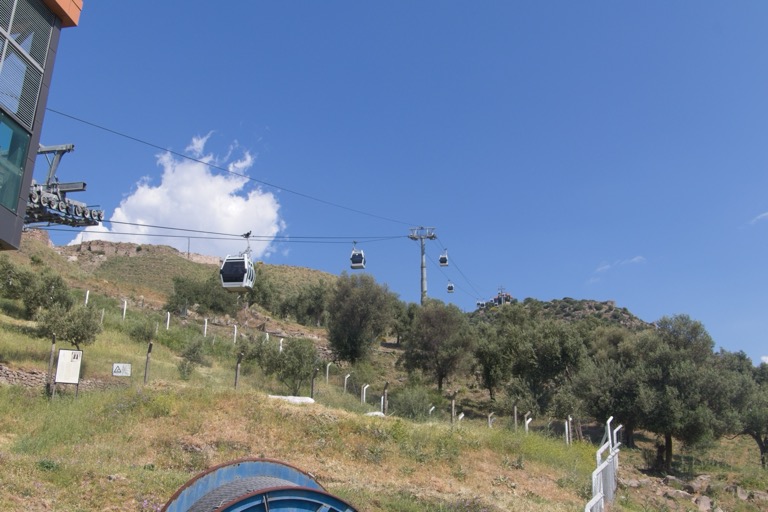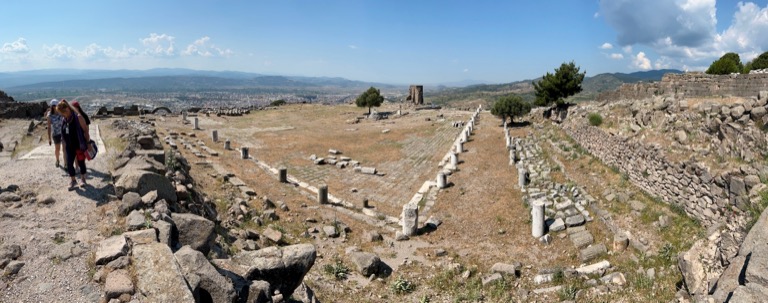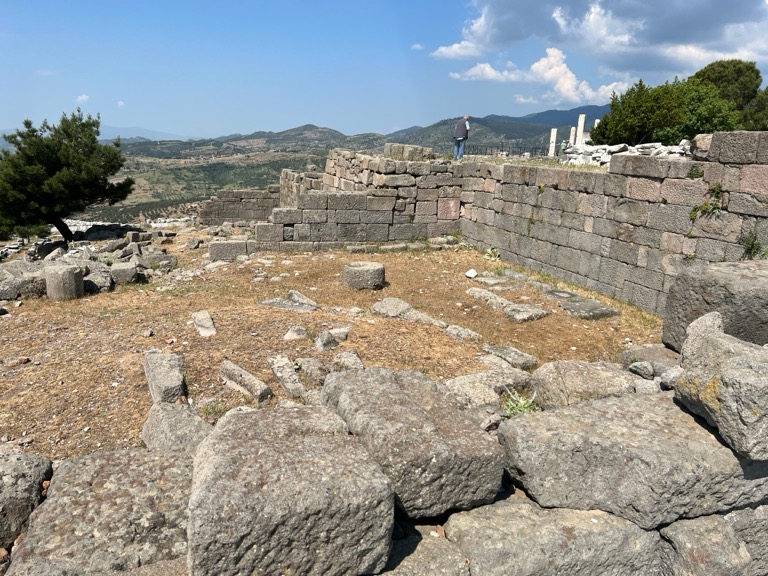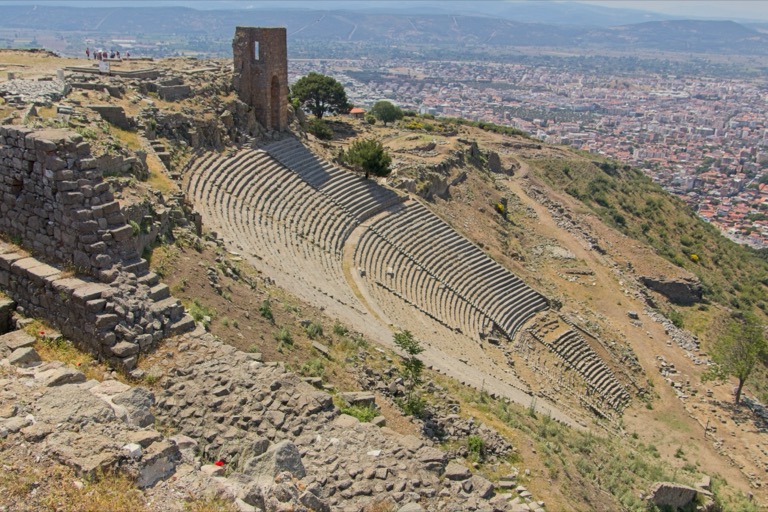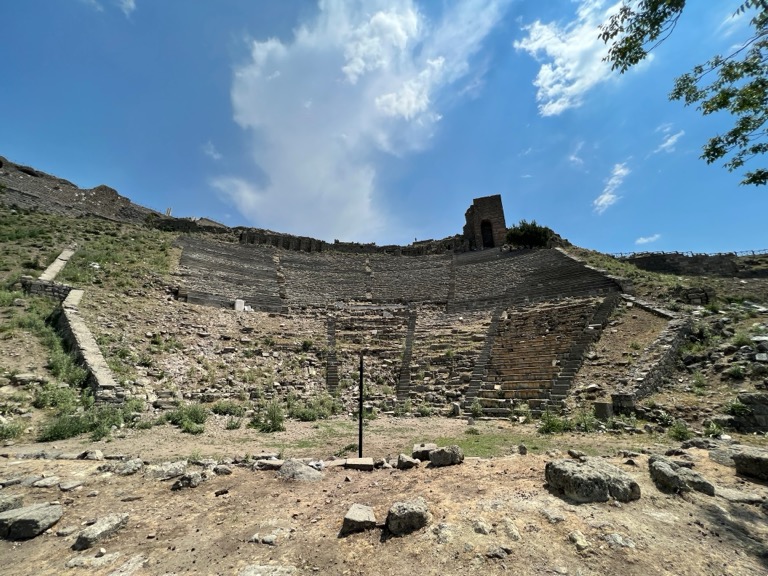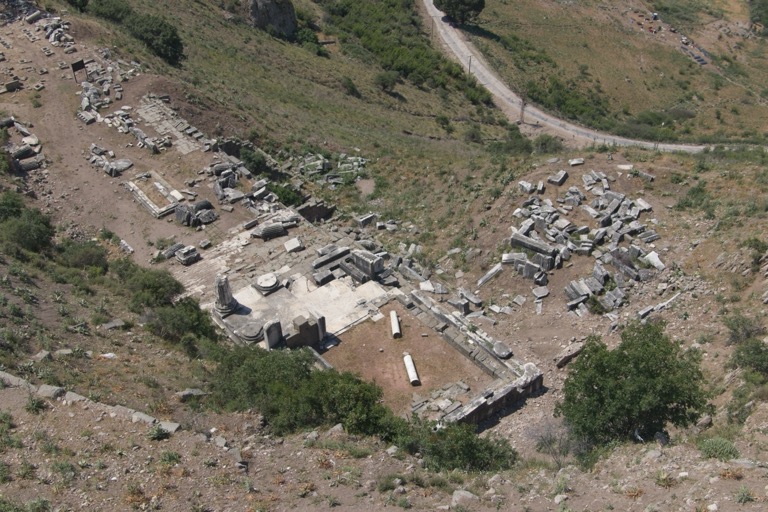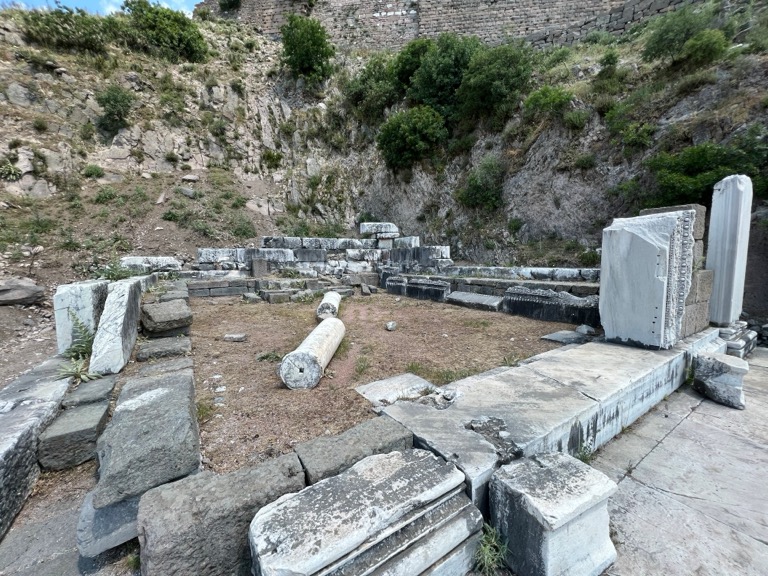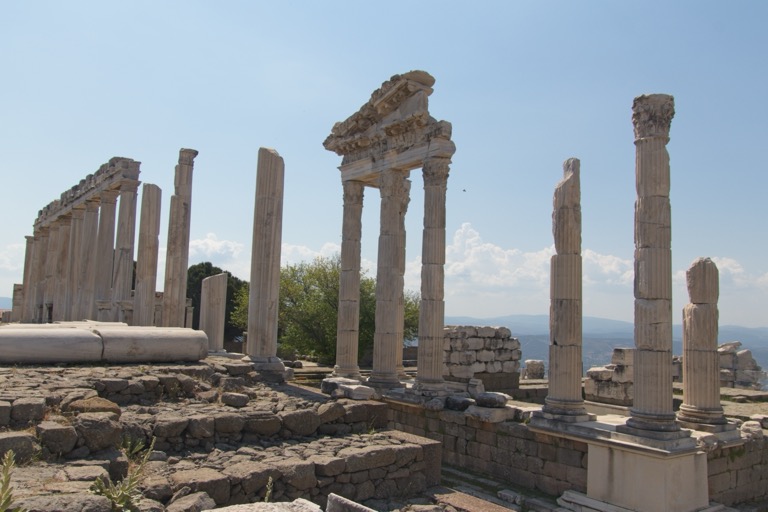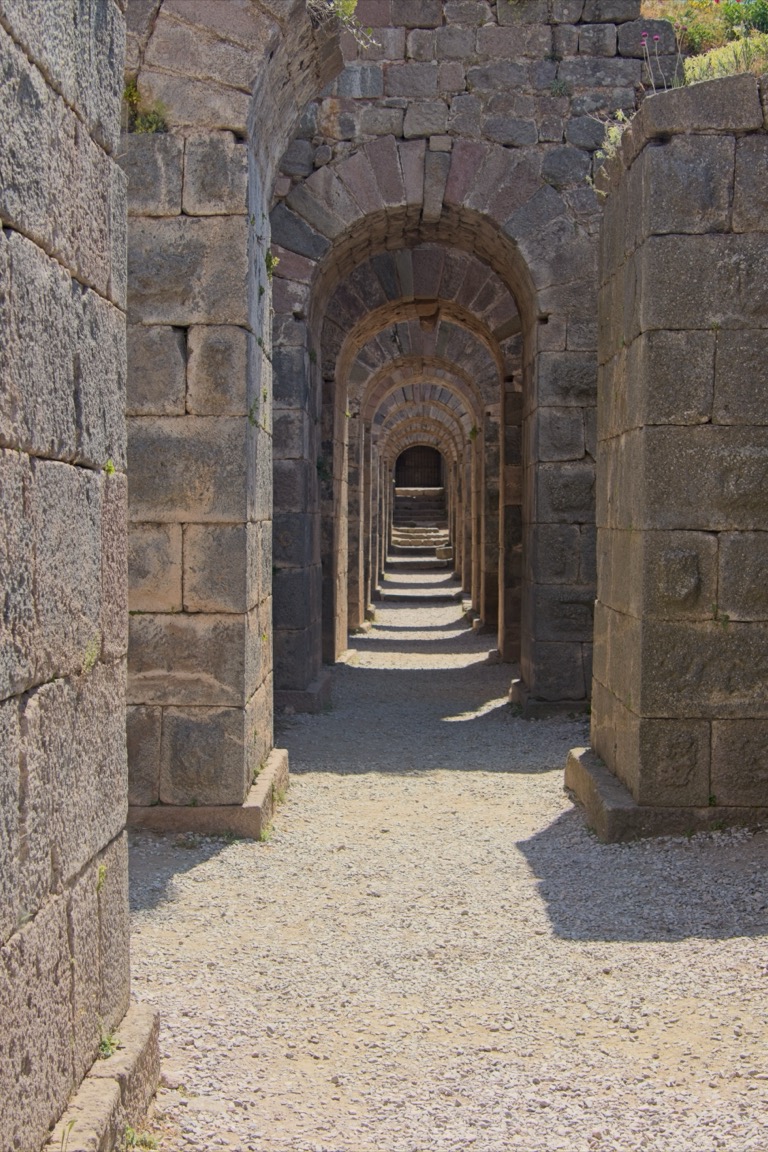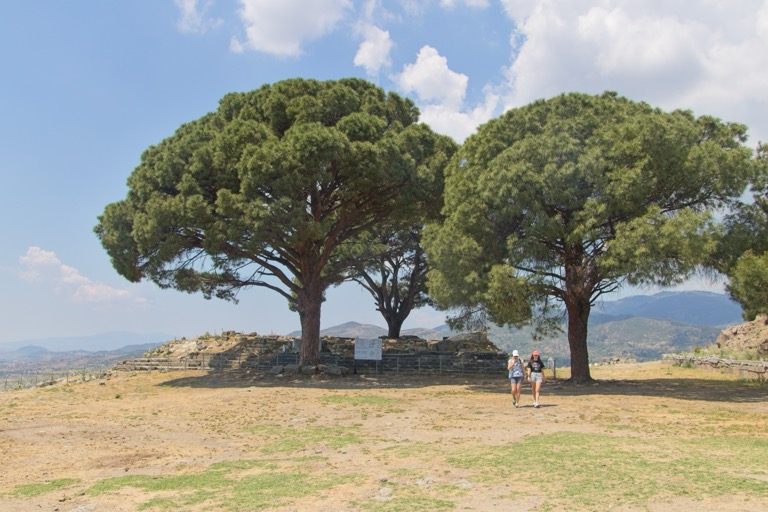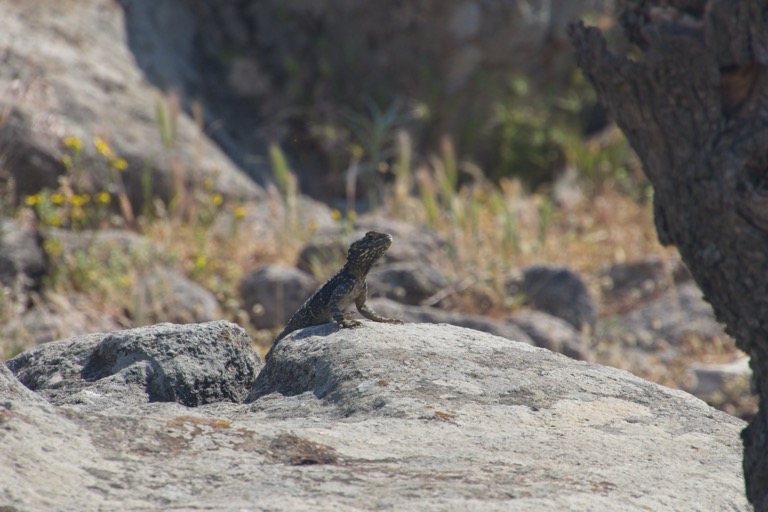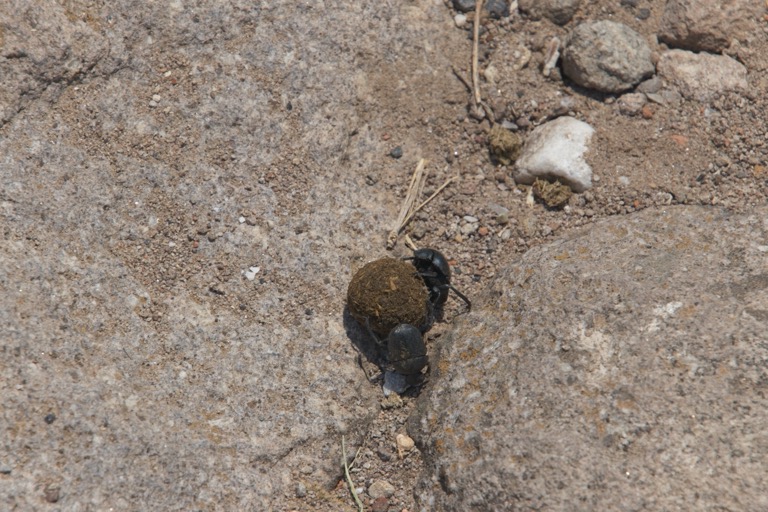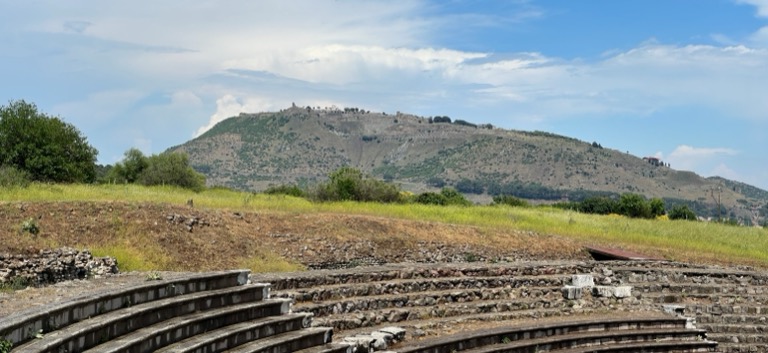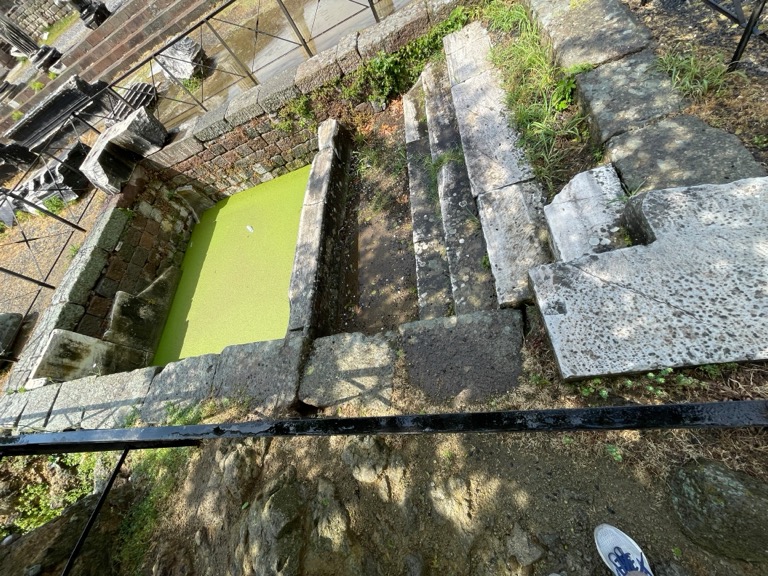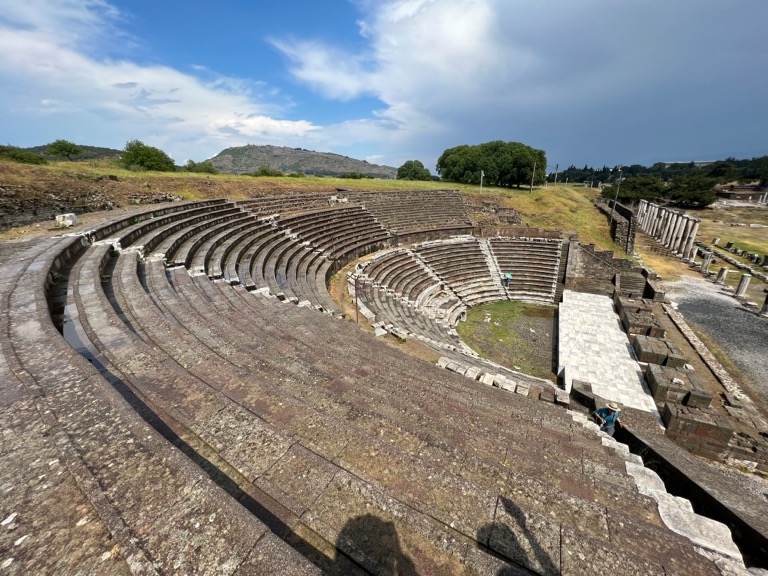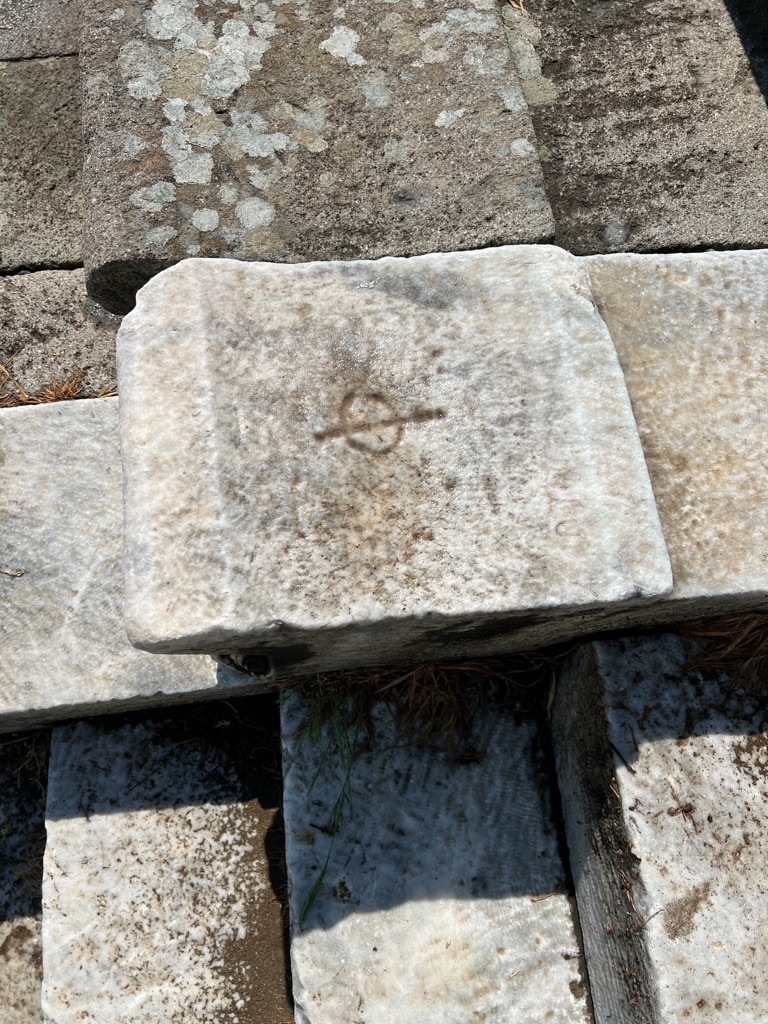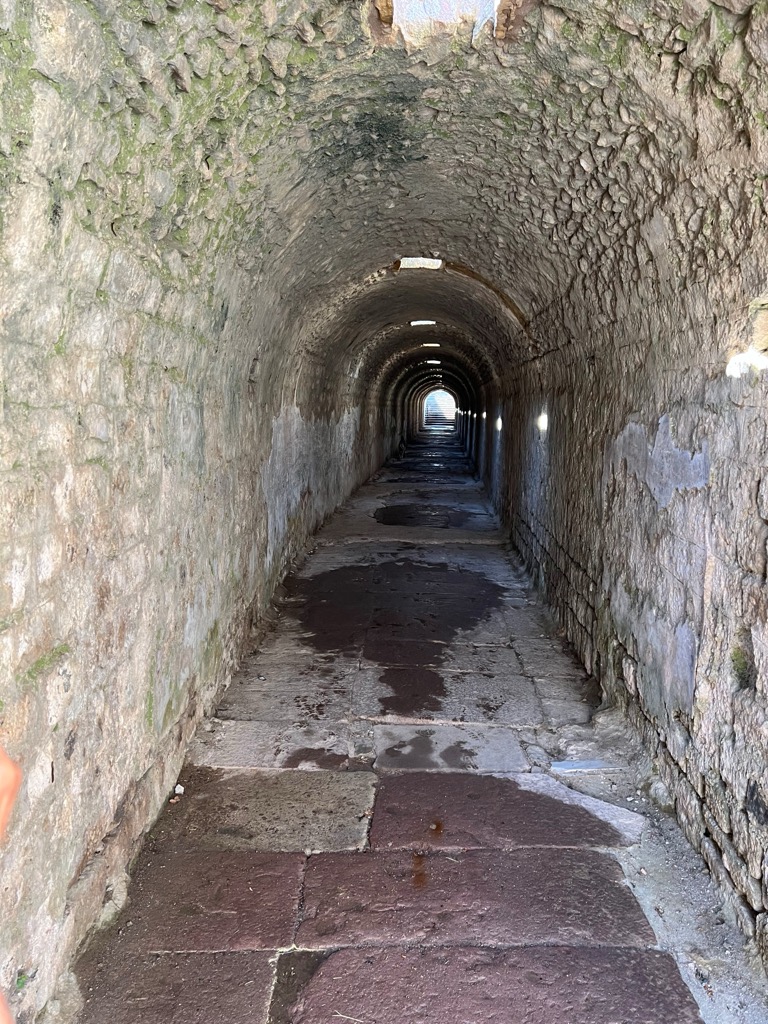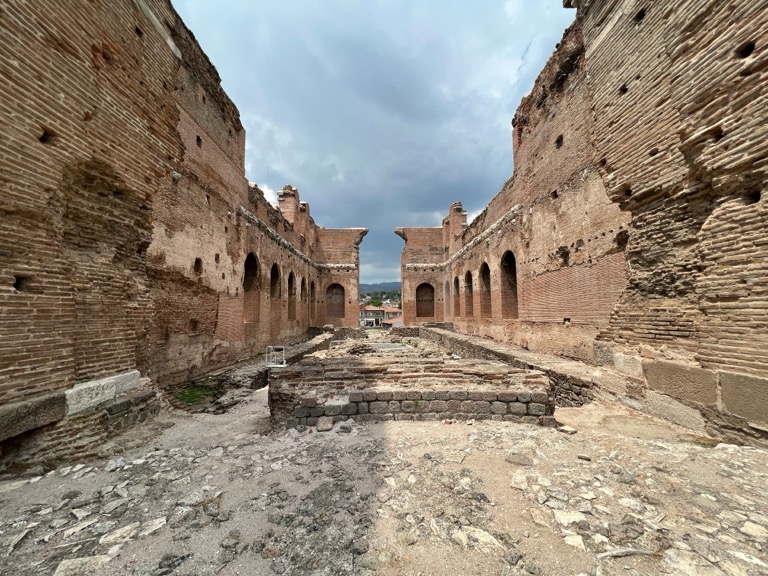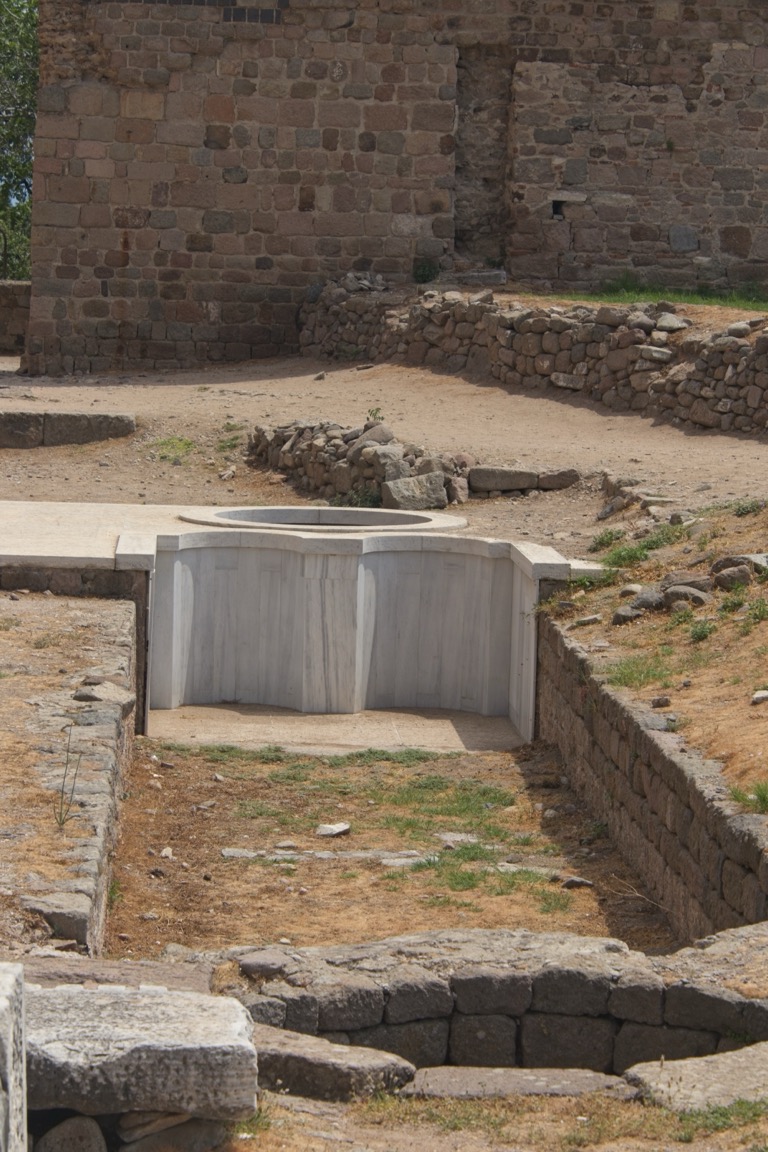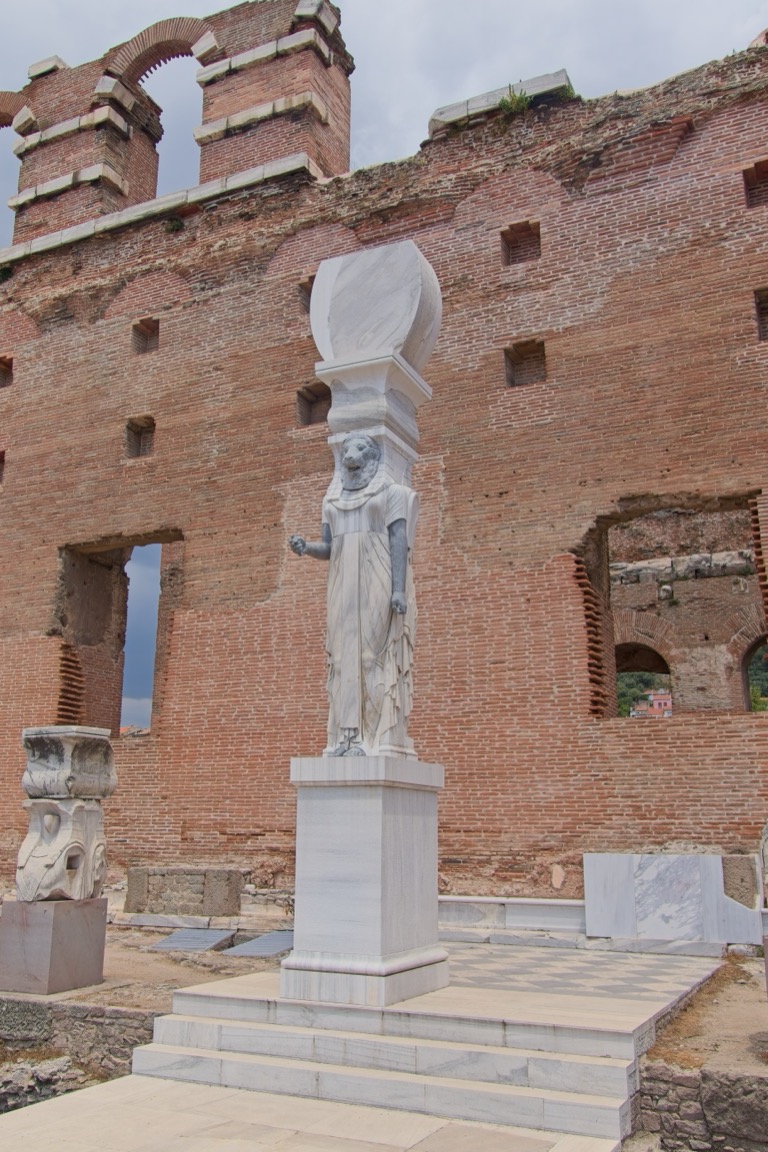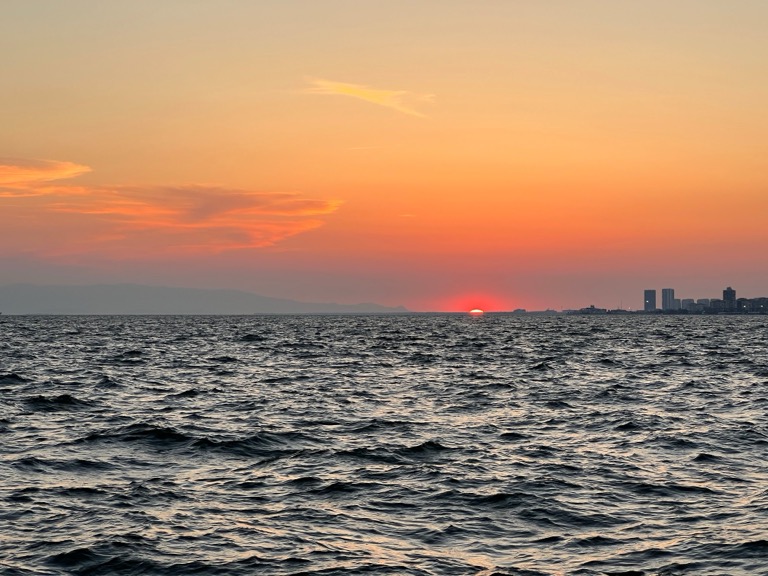on
Pergamon
We took the optional tour to Pergamon which is a UNESCO World Heritage Site. Some others had their fill of looking at old city ruins and stayed in Izmir.
It took about 90 minutes to get to Pergamon, then we had to wait a bit to take the cable car up to the hilltop city ruins.
The agora was an open marketplace.
The Library of Pergamon rivaled the Library of Alexandria for its collection size.
The theater seated around 10,000 people and is the steepest of all ancient theaters.
The Temple of Dionysos was to the north of the theater stage. The Attalid kings made Dionysos the chief god of their dynasty in the 3rd century BC.
The Temple of Trajan was built after the Romans took over the city. It was built in the highest portion of the city. The Romans built an arched platform to expand the plaza in front of the temple.
The Zeus Altar was in the southwest corner of the city. German archeologists explored Pergamon in the late 1800s and received permission from the Ottoman Empire to take the Altar to Berlin. All that is left is this mound of dirt with trees on it.
There is some wildlife living in the acropolis.
We ate lunch in a local restaurant. As we were getting ready to leave, it rained hard and the owner entertained us and another group by singing some traditional Turkish tunes.
The Asclepieion of Pergamon was a famous site for healing in ancient times. It is down in the valley to the southwest of the main Acropolis.
The Asclepieion had a sacred spring to soak in.
There is a small theater here that is in good condition.
Seats in the theater had owner markings on them.
There is graffiti carved in the columns along the agora. Here is a cross.
There is a tunnel that the healer priests blew hallucinogenic smoke into and had their patients walk through.
The Red Basilica in Bergama was originally built as a Roman temple, then later converted to a Christian church.
There are still statues of Isis.
Supper was at a pizza place on the bay.
